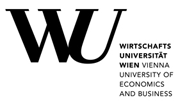Department of Economics Working Papers,
Vienna University of Economics and Business, Department of Economics
No 146: Economic integration and agglomeration in a customs union in the presence of an outside region
Pasquale Commendatore (), Ingrid Kubin (), Carmelo Petraglia () and Iryna Sushko ()
Additional contact information
Pasquale Commendatore: University of Naples “Federico II”, Italy
Ingrid Kubin: Department of Economics, Vienna University of Economics and Business
Carmelo Petraglia: University of Basilicata, Italy
Iryna Sushko: Institute of Mathematics, National Academy of Sciences of Ukraine
Abstract: New Economic Geography (NEG) models do not typically account for the presence of regions other than the ones involved in the integration process. We explore such a possibility in a Footloose Entrepreneur (FE) model aiming at studying the stability properties of long-run industrial location equilibria. We consider a world economy composed by a customs union of two regions (regions 1 and 2) and an “outside region” which can be regarded as the rest of the world (region 3). The effects of economic integration on industrial agglomeration within the customs union are studied under the assumption of a constant distance between the customs union itself and the third region. The results show that higher economic integration does not always implies the standard result of full agglomeration of FE models. This incomplete agglomeration outcome is due to the fact that the periphery region keeps a share of industrial activities in order to satisfy a share of “external demand”. That is, the deindustrialization process brought about by economic integration in the periphery of the union is mitigated by the demand of consumers living in the rest of the world. In general, the market size of the third region affects the number of the long-run equilibria, as well as their stability properties. In addition to the standard outcomes of FE models, we describe the existence of two asymmetric equilibria characterised by unequal distribution of firms between regions 1 and 2, with no full agglomeration though. Interestingly, these equilibria are stable and therefore can be regarded as a likely long-run equilibrium state of the economy.
Keywords: industrial agglomeration, three-region NEG models, footloose entrepreneurs
JEL-codes: C62; F12; F2; R12 October 2012
Note: PDF Document
Full text files
wp146.pdf
Report problems with accessing this service to Sune Karlsson ().
RePEc:wiw:wiwwuw:wuwp146This page generated on 2025-09-20 04:36:35.

